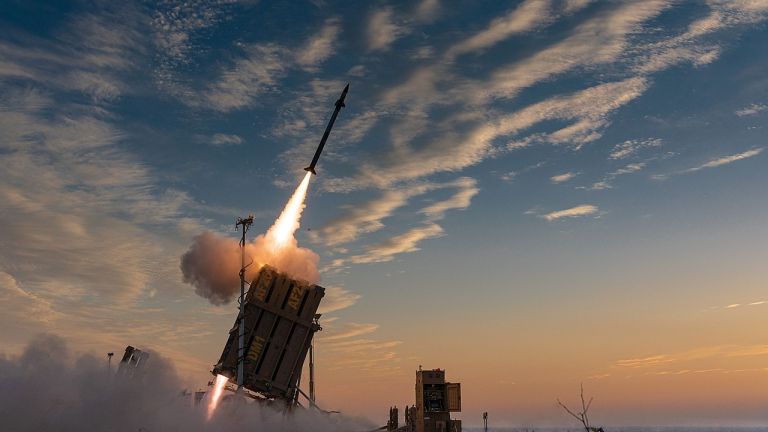The escalation of tensions between Israel and Palestine has once again shown how explosive the situation in the Middle East is. But while Tel Aviv has been able to launch unimpeded air strikes, Hamas missiles rarely reach their targets in Israel. The reason – the system “Iron Dome”.
See what the Iron Dome system looks like >> >> >>
Most recently, Israel announced that the Iron Dome missile shield was intercepted about 90 percent of the more than 1,800 rockets fired from Gaza. The percentage could have been higher if Hamas had not used the volley fire tactic, which increases the chance of a missile crossing the barrier. How do you get these results?
Since its inception, Israel has relied on a high-tech and strong army. Resources and forces have not been spared for investments in the military, and despite its small size, the country has managed to build a strong military-industrial complex. Tel Aviv produces machine guns, missiles, tanks, drones and even acquires nuclear weapons.
In 2005, General Danny Gold decided to launch a program to make Israel not just a military superpower, but virtually invulnerable to its adversaries. to inflict serious damage.
The development is entrusted exclusively to Israeli companies, such as Rafael and the software company mPrest Systems.
The goal is to create the best missile defense (AMD) in the world. It must be very high accuracy and speed of action, because the Palestinian missiles will not spend much time in the air before hitting their targets.
For this purpose, powerful radars have been built, densely covering the territory of Israel and concentrated especially around the Gaza Strip and the West Bank. A command center controls the operation of the scattered missile systems.
Interceptor missiles are extremely fast and up launch to a quickly calculated point, in which it is assumed that the enemy missile will pass. If the missile accidentally misses this point, it starts tracking the missile and gets up explodes parallel to it.
Israel’s great asset lies in the controllability of the missiles used by the missile defense.
Not only radars, fast Tamir solid propellant missiles, but also the created software and algorithm help for the high success.
The result is that the Iron Dome can shoot down missiles fired by the Katyusha and Grad self-propelled systems, as well as destroy shells.
https://www.youtube.com/watch?v=af28uc13OoA
The tests ended around 2011, when the system went on combat duty.
While it is an all-Israeli development, much of its funding comes from the United States, where Congress votes on military aid to Israel. There are no exact figures for the cost of developing the Iron Dome, but it is estimated that Tel Aviv has set aside about $ 1 billion and the United States has given $ 200 million. The cost of a missile interceptor is about $ 80,000.
Against the background of reduced by more than 90% strikes across the country, these costs are small.
The success of the Iron Dome is forcing Israel to offer its system to other countries. At that moment, Azerbaijan, Romania, India and the United States were armed with it.
Due to the ability to intercept short-range missiles and the development of Iran’s ballistic program, Tel Aviv is preparing additional versions of the “Iron Dome”. Some of them will be equipped with lasers instead of rockets, but the information is still too little.
–

/data/photo/2021/05/14/609e71a4cc2e3.jpg)
